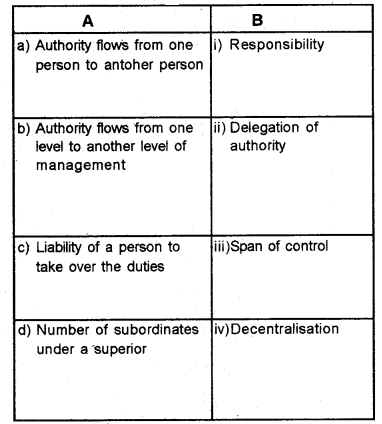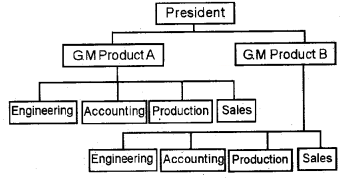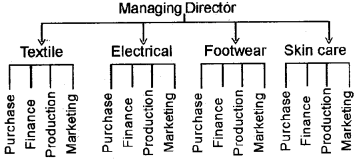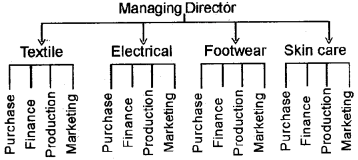Plus Two Business Studies Chapter 5 Organising Question and Answers PDF Download: Students of Standard 12 can now download Plus Two Business Studies Chapter 5 Organising question and answers pdf from the links provided below in this article. Plus Two Business Studies Chapter 5 Organising Question and Answer pdf will help the students prepare thoroughly for the upcoming Plus Two Business Studies Chapter 5 Organising exams.
Plus Two Business Studies Chapter 5 Organising Question and Answers
Plus Two Business Studies Chapter 5 Organising question and answers consists of questions asked in the previous exams along with the solutions for each question. To help them get a grasp of chapters, frequent practice is vital. Practising these questions and answers regularly will help the reading and writing skills of students. Moreover, they will get an idea on how to answer the questions during examinations. So, let them solve Plus Two Business Studies Chapter 5 Organising questions and answers to help them secure good marks in class tests and exams.
|
Board |
Kerala Board |
|
Study Materials |
Question and Answers |
|
For Year |
2021 |
|
Class |
12 |
|
Subject |
Business Studies |
|
Chapters |
Business Studies Chapter 5 Organising |
|
Format |
|
|
Provider |
How to check Plus Two Business Studies Chapter 5 Organising Question and Answers?
- Visit our website - https://spandanamblog.com
- Click on the 'Plus Two Question and Answers'.
- Look for your 'Plus Two Business Studies Chapter 5 Organising Question and Answers'.
- Now download or read the 'Class 12 Business Studies Chapter 5 Organising Question and Answers'.
Plus Two Business Studies Chapter 5 Organising Question and Answers PDF Download
We have provided below the question and answers of Plus Two Business Studies Chapter 5 Organising study material which can be downloaded by you for free. These Plus Two Business Studies Chapter 5 Organising Question and answers will contain important questions and answers and have been designed based on the latest Plus Two Business Studies Chapter 5 Organising, books and syllabus. You can click on the links below to download the Plus Two Business Studies Chapter 5 Organising Question and Answers PDF.
Question 1.
Which level of managers are responsible for determining formal organisation?
Answer:
Top level management
Question 2.
Name the type of organisation which does not have any predetermined objectives.
Answer:
Informal organisation
Question 3.
In ABC Ltd. all the decisions are taken by top level management only. Which policy is followed by organisation?
Answer:
Centralisation.
Question 4.
‘It is an organisation which is consciously coordinated towards a common objective’. State the type of Organisation.
Answer:
Formal organisation.
Question 5.
An organisation officially created by the management is called
Answer:
Formal organisation.
Question 6.
Name the organisation which emerges due to authority-responsibility relationship.
Answer:
Formal organisation.
Question 7.
A network of social relationship that arises spontaneously due to interaction at work is called.
Answer:
Informal organization
Question 8.
The form of organisation known for giving rise to rumours is called
Answer:
Informal organisation
Question 9.
In an organisation, the network of small social groups based on friendship is called
Answer:
Informal organisation
Question 10.
This structure is followed by large scale service organisation whose activities are geographically spread. Identify the type of organisation structure
Answer:
Divisional organisation.
Question 11.
Which of the following is not an element of delegation?
(a) Accountability parole
(b) Authority
(c) Responsibility
(d) Informal organisation
Answer:
(d) Informal organisation
Question 12.
A company has its registered office in Delhi, manufacturing unit at Chennai and marketing and sales department at Bangalore. The company manufactures consumer products. Which type of organisational structure should it adopt to achieve its target?
Answer:
Divisional organisation.
Question 13.
Which organisational structure is suitable for a multiproduct manufacturing company?
Answer:
Divisional organisation
Question 14.
Which organisational structure is suitable for a uni-product manufacturing company?
Answer:
Functional organisation
Question 15.
In this structure, activities are grouped on the basis of function. Identify the organisation structure.
Answer:
Functional organisation
Question 16.
Grouping of activities on the basis of product lines is a part of
(a) Delegated organisation
(b) Divisional organisation
(c) Functional organisation
(d) Autonomous organisation
Answer:
(b) Divisional organisation
Question 17.
Participation of lower levels in management is
Answer:
Decentralisation
Question 18.
Suggest the most suitable terminology to describe “the systematic dispersal of authority to the lower levels”.
Answer:
Decentralisation.
Question 19.
‘It is the right to give orders and the power to exact obedience.’ This is called
Answer:
Authority.
Question 20.
Name the concept which reduces the workload of a manager.
Answer:
Delegation of Authority.
Question 21.
Anything that goes to increase the importance of subordinates is called
Answer:
Decentralisation.
Question 22.
The technical term4which denotes the number of subordinates that a superior can effectively supervise.
Answer:
Span of control.
Question 23.
The following are different steps involved in the process of Organising.
(i) Grouping of similar jobs.
(ii) Division of work.
(iii) Co-ordination of activities.
(iv) Creation of authority relationship
Which of the following sequence is correct?
(a) iv, iii, i, ii
(b) ii, i, iv, iii
(c) ii, i, iii, iv
(d) iv, i, ii, iii
Answer:
(b) ii, i, iv, iii
Question 24.
Match the following.
Answer:
(a) → ii)
(b) → iv)
(c) → i)
(d) → iii)
Question 25.
Span of management refers to
(a) Number of managers
(b) Length of term for which a manager is appointed
(c) Number of subordinates under a superior
(d) Number of members in top management.
Answer:
(c) Number of subordinates under a superior
Plus Two Business Studies Organising Two Mark Questions and Answers
Question 1.
What is meant by organising?
Answer:
Organising is one of the most important functions of management, which includes
- Identifying and grouping the work to be performed.
- Defining and delegating authority and responsibility.
- And establishing relationships for the purpose of accomplishing objectives.
Question 2.
What do you mean by organisation as ‘process’?
Answer:
The process of organising involves division of work, grouping of jobs into departmentation, establishing authority relationships and co-ordination of activities. Therefore organising is treated as a process.
Question 3.
State the circumstances in which functional organisation is more suitable.
Answer:
It is most suitable when the size of the organisation is large and, has diversified activities and operations require a high degree of specialisation
Question 4.
Mr. Satheesh Babu, the General Manager of Venad automobiles decided to share some of his work with his newly appointed assistant manager Mr. Raju. This helped him to concentrate more on important tasks. Which management concept is referred here?
Answer:
Delegation of Authority:
Delegation means the granting of authority to subordinates to operate within the prescribed limits. It enables the manager to distribute his workload to others so that he can concentrate on important matters.
Question 5.
Suggest the most appropriate term used to describe the process of entrusting part of the work by the superior to his subordinates.
Answer:
Delegation of Authority:
Delegation means the granting of authority to subordinates to operate within the prescribed limits. It enables the manager to distribute his workload to others so that he can concentrate on important matters.
Plus Two Business Studies Organising Three Mark Questions and Answers
Question 1.
Why does informal organisation exist within the framework of formal organisation? Give any two reasons for the emergence of informal organization
Answer:
- To fulfil the social needs of the members.
- To make the communication easy.
Advantages
- There can be faster spread of communication.
- It helps to fulfil the social needs of the members and this enhances their job satisfaction.
- Top level managers can know the real feedback of employees on various policies and plans.
Question 2.
In a classroom discussion Saleem, a Plus Two Commerce student, argues that delegation and decentralisation are one and same.
- Do you agree with his argument?
- Give any two points to justify your answer.
Answer:
- I am not agreeing with this statement
- Difference between Delegation and Decentralisation
| Delegation | Decentralisation |
| It is the entrustment of authority and responsibility from one individual to another. | It is a systematic delegation of authority from one level to another level. |
| Responsibility cannot be delegated. | Responsibility can be delegated. |
| Delegation is a compulsory act. | Decentralisation is an optional policy decision. |
| More control by superiors hence less freedom to take own decisions. it is individualistic. |
Less control over executives hence greater freedom of action. It is totalistic. |
Plus Two Business Studies Organising Four Mark Questions and Answers
Question 1.
‘It is an organisation which is consciously coordinated towards a common objective’.
- What this organisation is called?
- State any 3 important features of this organisation.
Answer:
1. This is a formal organisation.
2. The important features are:
- It is deliberately created by the top management to achieve the objectives.
- It is based on division of labour and specialisation.
- It is impersonal – Does not take into consideration emotional aspect of employees.
- It clearly defines the authority and responsibility of every individual.^
- The principle of scalar chain is followed informal organisation
Question 2.
The employees of Manik Ltd., a software company, have formed a Dramatic group for their recreation.
- Name the type of organisation so formed.
- State its three features.
Answer:
1. Informal organisation
2. features are:
- It originates from within the formal organisation as a result of personal interaction among employees.
- It has no written rules and procedures.
- It does not have fixed lines of communication.
- It is not deliberately created by the management.
- It has no definite structure.
Question 3.
Explain the differences between Formal Organisation and informal Organisation.
Answer:
| Formal organisation | Informal organisation |
| 1) It is deliberately created by top-level management. | 1) It arises automatically as a result of social interaction among the employees. |
| 2) It has a pre-determined purpose. | 2) It has no predetermined purpose. |
| 3) It is highly rigid. | 3) It is more flexible. |
| 4) Communication is allowed through the scalar chain. | 4) Communication is allowed through all channels networks. |
| 5) Managers are leaders. | 5) Leaders are chosen voluntarily by the members. |
| 6) It is based on authority and responsibility. | 6) There is no authority and responsibility relationship. |
Question 4.
Delegation of authority is based on the elementary principle of division of work. Explain.
Answer:
In division of work, the work is divided into small tasks. Same way in the delegation, the manager divides some of his work and authority among his subordinates.
No manager can perform all the functions himself. To get the work done efficiently and in a specialized manner, the manager divides the work among his subordinates according to their qualification and capability.
Plus Two Business Studies Organising Five Mark Questions and Answers
Question 1.
“Formal organisation when blends with informal organisation result in organisational success.” Comment.
Answer:
Formal organisation refers to intentional structure of well-defined jobs informally organised enterprises. Such jobs are well defined in terms of authority, responsibility and accountability. It is based on division of labour and specialisation.
But informal organisation refers to relationship between individuals in the organisation based on interest, personal attitude, emotions, likes, dislikes etc.
The informal organisation is a part of the formal organisation; it cannot be separated. They are the two aspects of the same organisation and are linked to each other. Both are required for the success of an organisation.
Question 2.
“It is an organisation structure followed by large scale service organisations whose activities are geographically spread”.
- Find out the organisation structure.
- State its merits and demerits.

Answer:
1. It is divisional organisation.
2. merits and demerits are:
Divisional Structure:
Grouping of activities on the basis of different product manufactured are known as divisional structure of organisation. Each division has a divisional manager responsible for performance. Each division is multifunctional because within each division functions like production, marketing, finance etc. are performed together to achieve a common goal.
Advantages:
- Each division functions as an autonomous unit which leads to faster decision making.
- It helps in fixation of responsibility in cases of poor performance of the division
- It helps to develop the skill of the divisional head.
- It facilitates expansion and growth as new divisions can be added without interrupting the existing operations.
Disadvantages
- Conflict may arise among different divisions with reference to allocation of funds.
- It may lead to increase in costs since there may be a duplication of activities across products.
- It is not suitable for small organisations.
Question 3.
Arunima Pvt. Ltd. is a new company for manufacturing soaps at Mysore. They decided to have four functional departments – viz, Production, Marketing Finance and Administration.
- Recommend the most suitable organisation structure of the company.
- Give the diagrammatic representation of this organisational structure.
Answer:
1. It is functional organisation
2. organisational structure are:
Divisional Structure:
Grouping of activities on the basis of different product manufactured are known as divisional structure of organisation. Each division has a divisional manager responsible for performance. Each division is multifunctional because within each division functions like production, marketing, finance etc. are performed together to achieve a common goal.
Advantages:
- Each division functions as an autonomous unit which leads to faster decision making.
- It helps in fixation of responsibility in cases of poor performance of the division
- It helps to develop the skill of the divisional head.
- It facilitates expansion and growth as new divisions can be added without interrupting the existing operations.
Disadvantages
- Conflict may arise among different divisions with reference to allocation of funds.
- It may lead to increase in costs since there may be a duplication of activities across products.
- It is not suitable for small organisations.
Question 4.
Identify the organisation structure of a transport company having operations throughout India. Explain.
Answer:
It is divisional structure.
Types of Organisation Structures:
The organisational structure can be classified as undertwo categories.
- Functional Organisation
- Divisional Organisation
Question 5.
Distinguish between functional organisation and divisional organisation.
Answer:
| Functional Structure | Divisional Structure |
| 1. Formation is based on functions | 1. Formation is based on product lines. |
| 2. Functional specialisation | 2. Product specialisation |
| 3. Difficult to fix responsibility on a department | 3. Easy to fix responsibility for performance |
| 4. It is economical | 4. It is costly. |
| 5. Suitable for small organisation | 5. Suitable for big organisation |
Question 6.
“Delegation of authority leads to reduction in the workload of superiors.” In the light of this statement, comment briefly on the importance of delegation of authority.
Answer:
a. Delegation of Authority:
Delegation means the granting of authority to subordinates to operate within the prescribed limits. It enables the manager to distribute his workload to others so that he can concentrate on important matters.
b. Importance of Delegation of Authority:
1. Reduces the work load of managers:
The managers are able to function more efficiently as they get more time to concentrate on important matters.
2. Employee development:
Delegation empowers the employees by providing them the chance to use their skills,’gain experience and develop themselves for higher positions.
Plus Two Business Studies Organising Eight Mark Questions and Answers
Question 1.
“Organising is the backbone of management and it contributes to the success of an enterprise”. Point out your arguments in favour of this statement.
Answer:
a. Organising is one of the most important functions of management which includes:
- Identifying and grouping the work to be performed.
- Defining and delegating authority and responsibility.
- And establising relationships for the purpose of accomplishing objectives
b. Importance of Organising
1. Specialisation:
Since the activities are divided into convenient jobs and are assigned to a particular employee, it leads to specialisation, more productivity and efficiency.
2. Clarity in working relationship:
It helps in creating well-defined jobs and also clarifying authority – responsibility relationship between the superior and subordinates.
3. Optimum utilisation of resources:
The proper assignment of jobs avoids overlapping of work and also makes possible the best use of resources.
4. Adaptation of change:
It allows a business enterprise to adapt itself according to changes in the business environment.
5. Effective administration:
Clarity in working relationships enables proper execution of work and brings effectiveness in administration.
6. Development of personnel:
Organising stimulates creativity amongst the managers and subordinates.
7. Expansion and growth:
Organising helps in the growth and diversification of an enterprise by adding more job positions, departments and product lines.
Question 2.
ABC Ltd is a newly registered company. As a commerce student, can you help the management by providing the various steps involved in the managerial organisation functions?
Answer:
Step in the Process of Organising
1. Division of Work:
The first step in the process of organising involves identifying and dividing the work that has to be done. Division of work leads to specialisation.
2. Departmentation:
The second step is to group similar or related jobs into larger units, called departments. The grouping of activities is known as departmentation.
3. Assignment of duties:
The next step is to allocate the work to various employees according to their ability and competencies.
4. Establishing authority – responsibility relationship:
The last step is creation of authority – responsibility relationship among the job positions. It helps in the smooth functioning of the organisation.
Question 3.
Mr. Hassan, the General Manager of Almonsa Ltd. has decided to give some responsibility and decision making authority to the different levels of management so that he will be relieved of all daily routine activities.
- What is the concept referred to?
- State the benefit derived through this process.
- How does it differ from delegation of authority?
Answer:
1. Delegation of Authority:
Delegation means the granting of authority to subordinates to operate within the prescribed limits. It enables the manager to distribute his workload to others so that he can concentrate on important matters.
2. Importance of Delegation of Authority:
a. Reduces the workload of managers:
The managers are able to function more efficiently as they get more time to concentrate on important matters.
b. Employee development:
Delegation empowers the employees by providing them with the chance to use their skills, gain experience and develop themselves for higher positions.
c. Motivation of employees:
Responsibility for work builds the self-esteem of an employee and improves his confidence. He feels encouraged and tries to improvers performance.
d. Facilitation of growth:
Delegation helps in the expansion of an organisation by providing a ready workforce to take up leading positions in new ventures.
e. Superior-subordinate relations:
Delegation of authority establishes superior-subordinate relationships, which are the basis of hierarchy of management.
f. Better co-ordination:
The elements of delegation – authority, responsibility and accountability help to avoid overlapping of duties and duplication of effort
Plus Two Business Studies All Chapters Question and Answers
- Plus Two Business Studies Chapter Wise Question and Answers PDF
- Plus Two Business Studies Chapter 1 Nature and Significance of Management Chapter Wise Question and Answers PDF
- Plus Two Business Studies Chapter 2 Principles of Management Chapter Wise Question and Answers PDF
- Plus Two Business Studies Chapter 3 Business Environment Chapter Wise Question and Answers PDF
- Plus Two Business Studies Chapter 4 Planning Chapter Wise Question and Answers PDF
- Plus Two Business Studies Chapter 5 Organising Chapter Wise Question and Answers PDF
- Plus Two Business Studies Chapter 6 Staffing Chapter Wise Question and Answers PDF
- Plus Two Business Studies Chapter 7 Directing Chapter Wise Question and Answers PDF
- Plus Two Business Studies Chapter 8 Controlling Chapter Wise Question and Answers PDF
- Plus Two Business Studies Chapter 9 Financial Management Chapter Wise Question and Answers PDF
- Plus Two Business Studies Chapter 10 Financial Markets Chapter Wise Question and Answers PDF
- Plus Two Business Studies Chapter 11 Marketing Management Chapter Wise Question and Answers PDF
- Plus Two Business Studies Chapter 12 Consumer Protection Chapter Wise Question and Answers PDF
- Plus Two Business Studies Chapter 13 Entrepreneurial Development Chapter Wise Question and Answers PDF
Benefits of the Plus Two Business Studies Chapter 5 Organising Question and Answers PDF
The Plus Two Business Studies Chapter 5 Organising Question and Answers PDF that has been provided above is extremely helpful for all students because of the way it has been drafted. It is designed by teachers who have over 10 years of experience in the field of education. These teachers use the help of all the past years’ question papers to create the perfect Plus Two Business Studies Chapter 5 Organising Question and Answers PDF.
0 comments:
Post a Comment